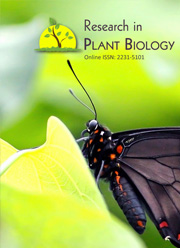Preliminary studies on the reproductive biology of Enterolobium contortisiliquum
Abstract
At present ten neotropical species of Enterolobium are known from Central to South America. Of them, only some aspects of the reproductive biology of E. cyclocarpum, a Mesoamerican species, are known at present. In Argentina grow Enterolobium contortisiliqumm (Vell.) Morong. Its reproductive biology is still unknown, in order to elucidate this, morphologic studies on the flowers of several populations were analized.  The flowers are disposed in piramidal double racemes of heads.  When anthesis occur two kind of flowers can be distinguished: 1) Perfect flowers with the anthers open exposing the polyads (till four in each theca), stigma receptive, ovary with ovules, an annular and a prominent nectary at the base of the staminal tube. 2) Staminate flowers with the anthers open exposing the polyads (till four in each theca), an annular nectary at the base of the staminal tube less prominent than in the perfect ones.  The pollen is produced in pseudoacalymated polyads. The description of   the species is here amended because of the two morphs that have been found.  The specific description is modified. Two floral morphs can be recognized: perfect flowers (donor and receptor of pollen) and staminate flowers (donor of pollen). When the staminate flowers are present, constitutes in average the 14.57 % of the head (range 0-100%, n = 858).  In consequence, not all the flowers can produce fruits, so the whole inflorescence, a double raceme of heads, act as a long - distance attraction unit to pollinators.Â



 .
. 